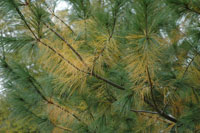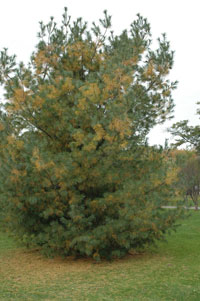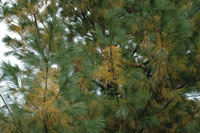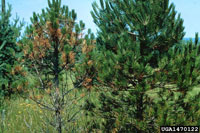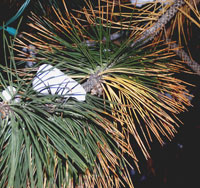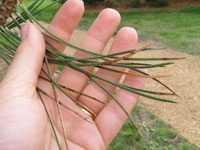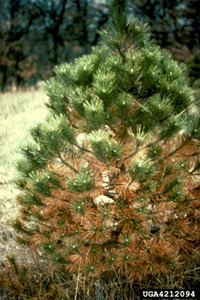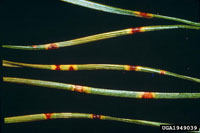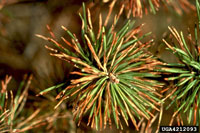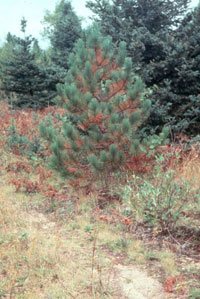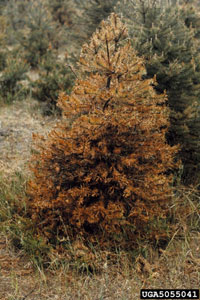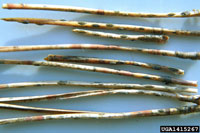Extension > Garden > Diagnose a problem > What's wrong with my plant? > Evergreen Trees and Shrubs > Pine > Older, inner needles discolored
Pine > Needles > Older, inner needles discolored
1 of 4
Seasonal needle drop
- Older, inner needles turn completely yellow without any spots
- Needles drop, usually in fall
- Lost needles may be two years old or more, depending on species
- All pines in Minnesota, but most noticeable on white pine
- More information on Seasonal needle drop
2 of 4
Dothistroma needle blight
Mycosphaerella pini
- Tan to brown spots on 1 yr. or older needles turn red in the sun
- Needle tips are tan, bases remain green, scattered with brown or red spots
- Tiny, raised, black pimple-like fungal spore producing structures form on dead needle tissue
- Diseased needles turn completely brown and eventually drop
- Lower portions of tree are most severely affected
- Most common on Austrian and ponderosa pine; Scots pine has some resistance
- Lab analysis is often necessary to distinguish Dothistroma needle blight from Brown spot
- More information on Dothistroma needle blight
3 of 4
Brown spot needle blight
Mycosphaerella dearnessii
- Small yellow to brown, resin-soaked spots form on 1 yr old needles in June-Aug
- Often needle tip is killed and turns tan, base of needle remains green with random yellow to brown spots
- Tiny, raised, black pimple-like fungal spore producing structures form on dead needle tissue
- Diseased needles fall off in autumn
- Infections are most common on lower branches
- Outbreaks favored by prolonged wet weather in June and July
- Scots pine most commonly infected; many Minnesota pines are susceptible
- Lab analysis is often necessary to distinguish Brown spot from Dothistroma needle blight
- More information on brown spot needle blight
4 of 4
Lophodermium needle cast
Lophodermium seditiosum
- Yellow to brown spots appear in late summer or early fall
- 1 yr old needles turn brown in spring
- Gray to black ovals with a slit down the center (fungal spore producing structures) can be seen on dead needles
- Infected needles drop prematurely during the summer
- Lower branches and small trees most severely effected
- Common on red, Austrian and Scots pine
- More information on Lophodermium needle cast



